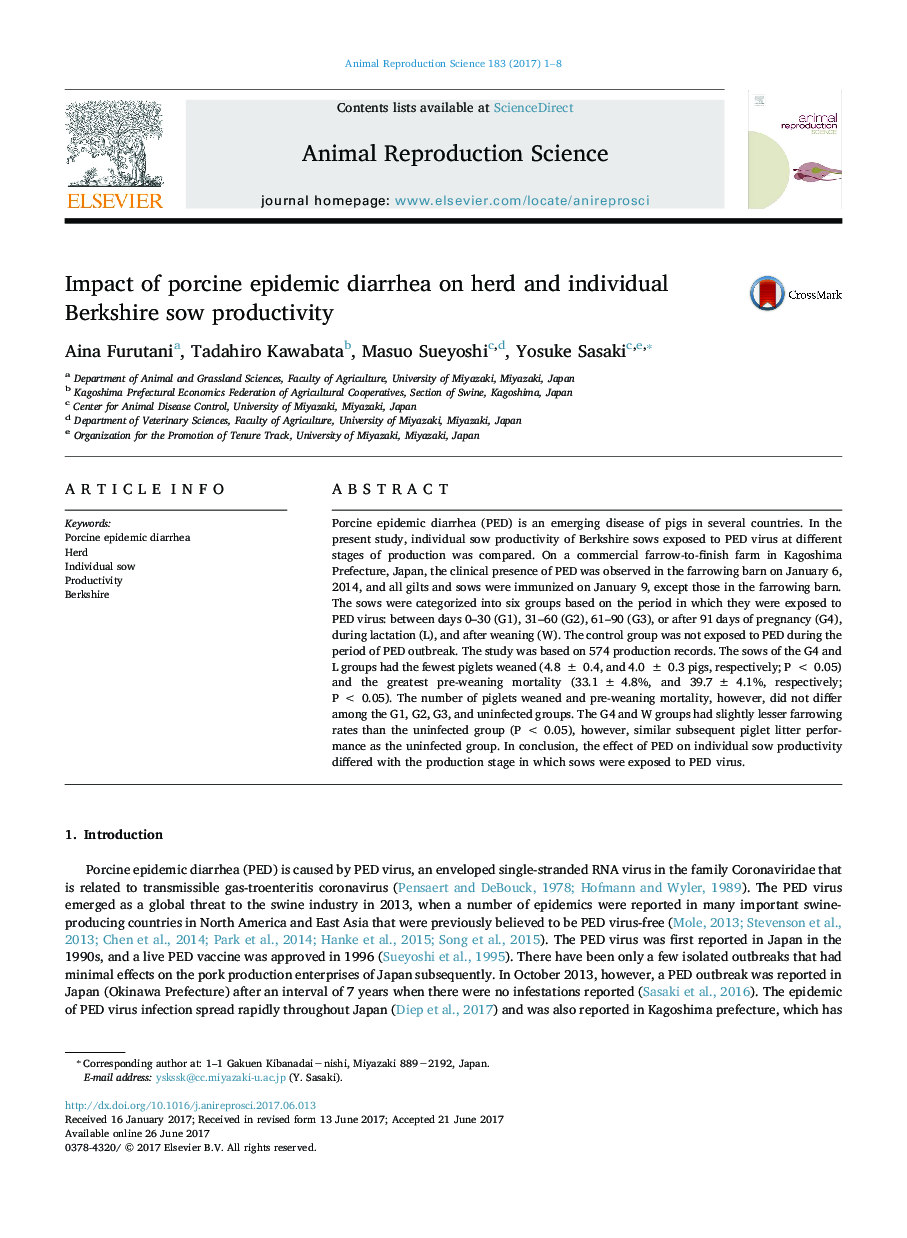| Article ID | Journal | Published Year | Pages | File Type |
|---|---|---|---|---|
| 5520298 | Animal Reproduction Science | 2017 | 8 Pages |
Porcine epidemic diarrhea (PED) is an emerging disease of pigs in several countries. In the present study, individual sow productivity of Berkshire sows exposed to PED virus at different stages of production was compared. On a commercial farrow-to-finish farm in Kagoshima Prefecture, Japan, the clinical presence of PED was observed in the farrowing barn on January 6, 2014, and all gilts and sows were immunized on January 9, except those in the farrowing barn. The sows were categorized into six groups based on the period in which they were exposed to PED virus: between days 0-30 (G1), 31-60 (G2), 61-90 (G3), or after 91âdays of pregnancy (G4), during lactation (L), and after weaning (W). The control group was not exposed to PED during the period of PED outbreak. The study was based on 574 production records. The sows of the G4 and L groups had the fewest piglets weaned (4.8 ± 0.4, and 4.0 ± 0.3 pigs, respectively; P < 0.05) and the greatest pre-weaning mortality (33.1 ± 4.8%, and 39.7 ± 4.1%, respectively; P < 0.05). The number of piglets weaned and pre-weaning mortality, however, did not differ among the G1, G2, G3, and uninfected groups. The G4 and W groups had slightly lesser farrowing rates than the uninfected group (P < 0.05), however, similar subsequent piglet litter performance as the uninfected group. In conclusion, the effect of PED on individual sow productivity differed with the production stage in which sows were exposed to PED virus.
